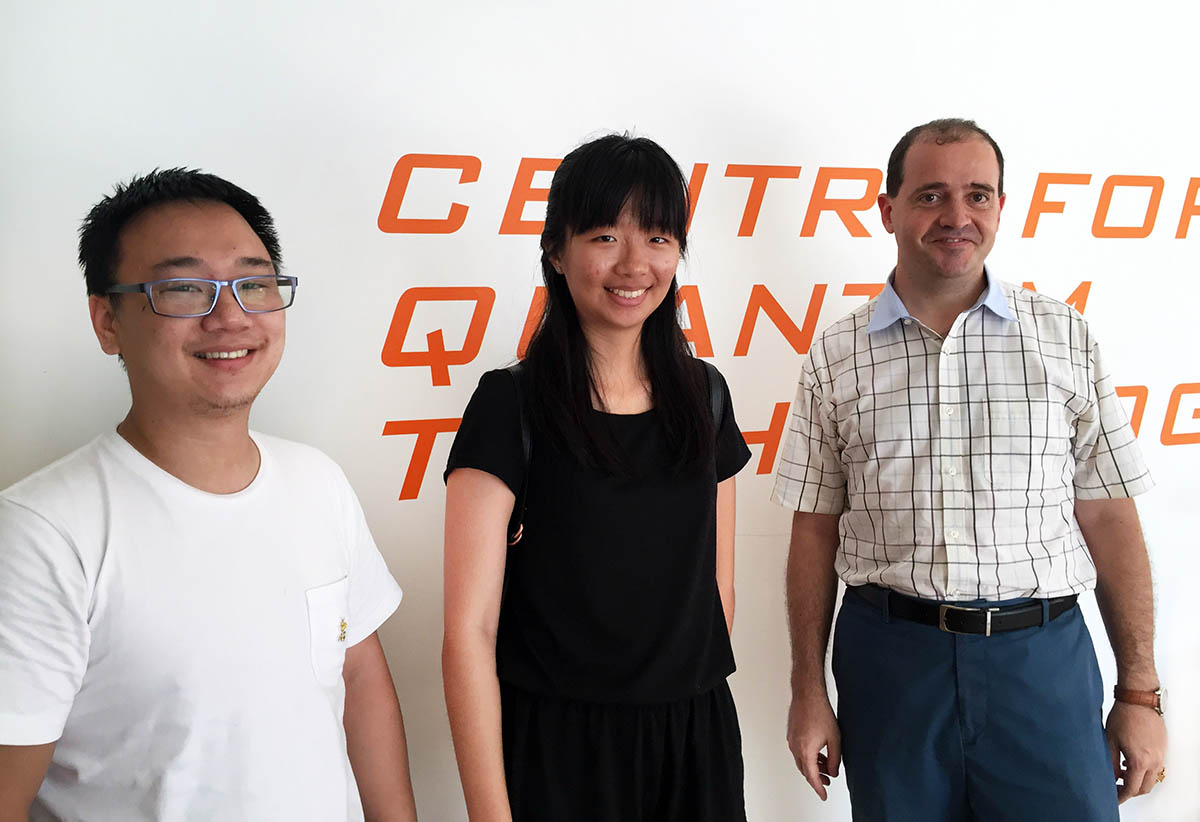Highlights
When dimensions are not what they seem
 Standard protocols to measure the dimensions of quantum systems may return deceptively high numbers, CQT researchers say. Cai Yu, Cong Wan and Valerio Scarani (pictured above, left to right) and Jean-Daniel Bancal introduce the idea of measuring irreducible dimensions.
Standard protocols to measure the dimensions of quantum systems may return deceptively high numbers, CQT researchers say. Cai Yu, Cong Wan and Valerio Scarani (pictured above, left to right) and Jean-Daniel Bancal introduce the idea of measuring irreducible dimensions.
In a paper published 25 August in Physical Review Letters, CQT researchers introduce the new concept of 'irreducible dimensions'. They argue that physicists need to rethink how to measure the dimensions of quantum states for communication and computing.
Theoretical physics is notorious for playing with dimensions. String theorists suppose the universe itself could have 10 physical dimensions or more. The CQT researchers are concerned not with space-time but with Hilbert space, a realm of potentially infinite dimensions inhabited by quantum systems.
"The goal of our paper is to show there is a conceptual problem in how dimension witnesses are defined," says CQT Principal Investigator Valerio Scarani, who carried out the work with Cong Wan, Cai Yu and Jean-Daniel Bancal.
Qubit, Qutrit, Ququart
The Hilbert Space dimension of a quantum system tells you how much information the system can store. Accurate measurement is therefore important for proper implementation of quantum communication and quantum computing protocols.
A quantum system of dimension two, for example, has two possible states and exists in some mixture of them. A quantum bit, or qubit, has states equated with '0' and '1'. A qutrit is a three dimensional system with states '0', '1' and '2'. A ququart has four dimensions.
What the CQT team found is that dimension witnesses – measurement protocols designed to work out the dimension of a state – cannot distinguish between a group of systems of low dimension and a truly, irreducibly, high-dimensional state.
Two qubits that don't interact show up as dimension four, although they don't have the computational power of two qubits that do interact. Only interacting qubits make a useful ququart. You could think of it like trying to assess a vehicle by counting wheels. The old witnesses couldn't distinguish two two-wheeled motorbikes from a four-wheeled truck.
In Physical Review Letters, the team both point out the problem and propose a witness that can detect irreducible dimension four.
Reset
Postdoc Jean-Daniel was first to raise doubts about how dimension witnesses work. It came at the end of a previous project to implement a dimension witness, as the team was writing up the results.
"Once you see the argument, you know it's correct," says Valerio, "I told them to stop everything; reset." The team rewrote their conclusions. Meanwhile, NUS undergrad Cong Wan and then-PhD student Cai starting to work on new definitions for dimension witnesses – ultimately leading to this paper.
Cong Wan's research formed her final-year project. She has since completed a Master's degree at the University of Cambridge, UK, and is soon to start a PhD on quantum information under the influence of gravity at Perimeter Institute in Canada. Cai has graduated and continues as a Research Fellow in Valerio's group. Jean-Daniel is now at the University of Basel in Switzerland.







